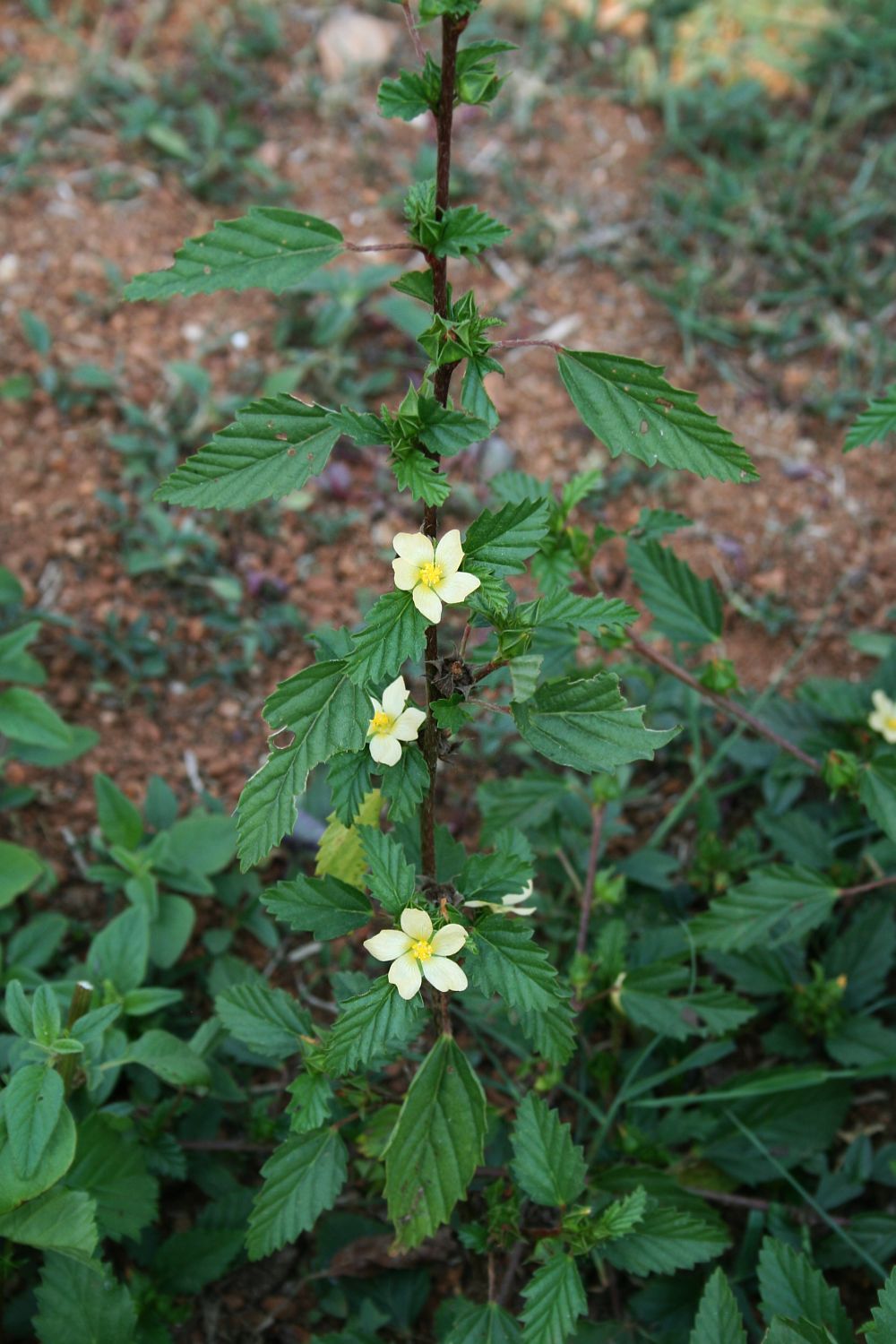Exploring Wright’s false mallow
Scientifically recognized as Malvastrum coromandelianum and classified under Malvaceae, stands out as a distinctive Herbaceous perennial known for its unique characteristics. While it may also be found under other Synonyms, Malva coromandeliana, Malvastrum coromandelianum.withNone specified form. You can use our free plant care app PlantPlants to identify Wright’s false mallow.
Temperature
50 F (10 C) min, 100 F (38 C) max
Watering
Moderate; tolerates drought once established
Fertilizing
Balanced fertilizer (N-P-K ratio of 10-10-10)
Sunlight
Full sun to partial shade
Toxicity
Generally regarded as non-toxic



Appearance and Growth Of Wright’s false mallow
At maturity, this species reaches approximately 1-3 feet tall, presenting Ovate to lanceolate leaves, typically green with a slightly hairy texture along with Yellow to orange funnel-shaped flowers with five petals, followed by Small, glabrous capsules containing seeds. These features are supported by a reliable Fibrous root system, ensuring stability and sustained growth.
Wright’s false mallow Origin and Habitat
Native to Native to tropical and subtropical regions, including parts of the Americas, Wright’s false mallow thrives in Prefers disturbed areas, often found in open fields and roadsides at elevations around 0-3000 meters. Best suited for USDA Hardiness Zone 9-11. Whether grown indoor, in a curated garden or a more natural setting, its ecological requirements help maintain its vigor over time.



How to take Care of Wright’s false mallow
Light, Soil and Watering Wright’s false mallow.
You can use our free plant identify app PlantPlants to chose the best spot for Wright’s false mallow, This plant prefers Full sun to partial shade and flourishes in Well-draining sandy or loamy soil with a soil pH of about 6.0-7.5.
Wright’s false mallow needs watering,Moderate; tolerates drought once established, guided by PlantPlants app, You can get plants daily watering schedule. to maintain Prefers slightly moist but well-drained soils, ensure steady hydration. Applying water through Water at the base, avoid overhead watering to prevent fungal issues supports even distribution and helps prevent overwatering or dryness.
Temperature and Humidity
Wright’s false mallow performs best within 60-100 F (15-38 C). Its ideal growth occurs at around 75-90 F (24-32 C), though it tolerates ranges from 50 F (10 C) min, 100 F (38 C) max. Additionally, maintaining Moderate humidity encourages healthy foliage and overall plant vigor.
Fertilization & Soil Health
Feeding with Balanced fertilizer (N-P-K ratio of 10-10-10) at the recommended Seasonal Application Frequency on PlantPlants App keeps nutrients balanced. Incorporating Organic compost or well-rotted manure enhances soil structure and fertility, while staying alert to Yellowing leaves, stunted growth helps you adjust care as needed to maintain optimal plant health.
Routine and Maintenance
Regular attention ensures this plant’s beauty and longevity. Late winter or early spring for Cut back dead growth; shape as needed tidies its appearance, while Every 2-3 years, as needed may be necessary as it grows, requiring a Increase pot size by at least 2 inches in diameter increase and a fresh Light, well-draining potting mix. for Staking or Support. Rarely needed unless in very windy conditions.
Seasonal Changes and Propagation of Wright’s false mallow
During None; tropical species may slow growth in cooler months, growth may slow and some Evergreens; may become less vigorous in winter can occur. For those looking to propagate, consider Seed propagation and stem cuttings and provide Warm temperatures around 70 F (21 C), keep soil moist when starting from seed. If using cuttings, follow Take 4-6 inch cuttings, remove lower leaves, dip in rooting hormone, and plant in moist soil to ensure successful rooting and healthy new plants.
Pests, Diseases and Prevention
our free plant identify and care app PlantPlants can help you diagnosisWright’s false mallow problems.Though generally robust, keep watch for Aphids, spider mites, whiteflies and remain vigilant against Root rot, powdery mildew. Implementing Maintain good air circulation, avoid overhead watering and applying Insecticidal soap for pests; remove affected leaves for diseases when issues arise will help sustain the plant thriving.
Companions and Uses of Wright’s false mallow
This plant pairs nicely with Other flowering perennials, pollinator-friendly plants and shows May suppress some weed species, making it a flexible choice for various Ornamental gardens, pollinator gardens.
Edible and Cultural Aspects
the Edible Parts: Leaves and young flowers can be consumed. Toxicty of Wright’s false mallow, Generally regarded as non-toxic. learning about its Year-round; pick young leaves and flowers, Used in salads, stews, and as a wild leafy green, and Rich in vitamins A and C, dietary fiber can be intriguing for culinary explorers. Some traditions highlight its Historically used in traditional medicine for its anti-inflammatory properties or note its Associated with traditional culinary practices in some cultures.
Conservation and Status
With an Not evaluated, proper Habitat preservation; education on non-invasive practices
Frequently Asked Questions
1. Is Wright’s False Mallow a perennial?
Yes, it is a herbaceous perennial plant.
2. How tall does Wright’s False Mallow grow?
It typically grows to 1-3 feet in height.
3. What kind of soil does Wright’s False Mallow prefer?
It thrives in well-draining sandy or loamy soil.
4. Can Wright’s False Mallow tolerate drought?
Yes, once established, it can tolerate moderate drought conditions.
5. When is the best time to prune Wright’s False Mallow?
Pruning should be done in late winter or early spring.
6. What type of pests commonly affect Wright’s False Mallow?
Common pests include aphids, spider mites, and whiteflies.
7. Is Wright’s False Mallow safe to eat?
Generally, it is considered non-toxic and its leaves and flowers can be consumed.
8. How can I propagate Wright’s False Mallow?
You can propagate it from seeds or stem cuttings.
9. What is the ideal growth temperature for Wright’s False Mallow?
The ideal growth temperature is between 75-90 F (24-32 C).
10. Does Wright’s False Mallow have any medicinal properties?
It has historically been used for its anti-inflammatory properties in traditional medicine.



